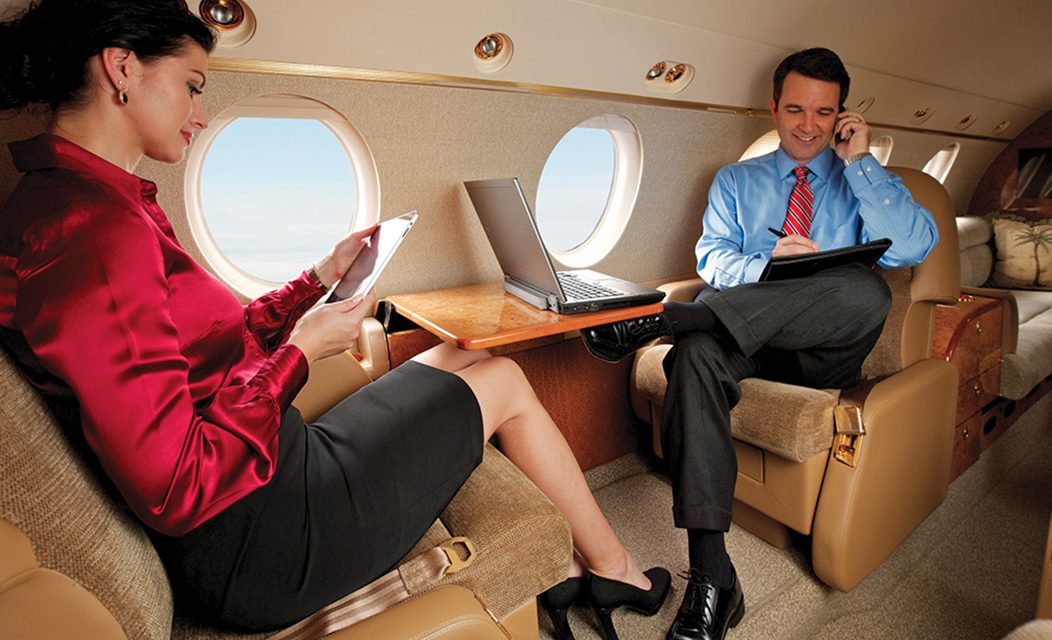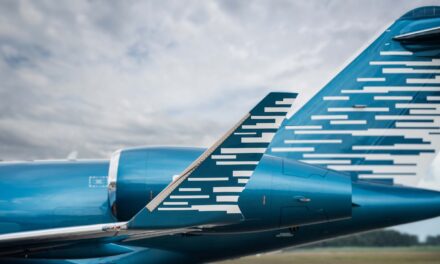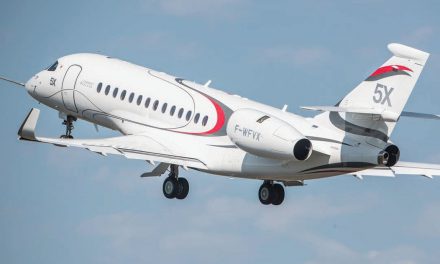By Frédéric Vergnères
Copyright : Satcom Direct
How is the current market for connectivity installation, not only for the whole sector but also for Satcom Direct ?
The market for connectivity installation is developing rapidly. The passenger now wants to be connected in the air for internet, telephony, entertainment, in much the same way as he is on the ground. Passengers, operators and brokers expect an aircraft to have some form of connectivity system on board. In an ideal world, this would reflect what they regularly utilise on the ground at home or in their office. The level of demand is higher and there is increased expectation from passengers who want more data, faster and all the time. Flight departments are also increasingly looking at how connectivity can make them more efficient. As far as SD is concerned our offering has moved from being just a communications supplier, which we were when we launched twenty years ago, to being a complete connectivity supplier. With our Satcom Direct Router on board an aircraft can now be connected to the ground in many ways. Our GlobalVT option enables passengers to use their own personal smartphone in the air, as it is on the ground. They can make and receive calls, as well as texts, using your own personal number, from taxi and take off through to landing and taxi to the FBO. The system also supports internet use, Wifi throughout the cabin, cabin management system operations and inflight entertainment. At EBACE we’ll be promoting our relationship with Lufthansa Technik and how SD powers the Lufthansa Technik nicemedia® SmartBox.
The portable memory device is connected to the SD Router and enables passengers to enjoy a changing selection of the latest movies and TV shows. The programmes and movies can be viewed via the onboard inflight entertainment system or watched through personal electronic devices. We’ve also developed the SD WiFI Hub which can support connectivity on small to mid-size aircraft which brings customers GlobalVT amongst other features. It can also be used to enhance connectivity on ultra-long range narrow body fleets too. We’ve extended our services to the cockpit too which is supported by SD Pro, providing flight departments with an easy to use digital dashboard that displays accurate, integrated information about the whole flight. It not only tracks and stays in contact with the aircraft but it also streamlines operations and records the activity of the aircraft so supporting maintenance planning. After twenty years in the business we are pleased to say that we can connect the aircraft to the ground from nose to tail to provide a complete set of information, connectivity and entertainment solutions. This is extremely attractive for operators and owners.
What are the main current and future innovations for connectivity in the cabin?
From our perspective, we are always innovating and have introduced many new products in the last year. We also pride ourselves on generating partnerships that support customer requirements. In the last year, we have developed new relationships that have brought unique benefits. We have acquired TrueNorth which produces the hardware which supports aircraft connectivity, we have purchased Aircraft Logs which integrates flight department accounting, maintenance and scheduling tasks across the board. We have also formed a strong relationship with Astronics Aerosat to sell the FliteStream T-Series tail mount connectivity system through our global dealer network. The first of its kind in the business aviation market, the FlightStream T-Series solution employs the Panasonic Avionics global communications network to enable business jet passengers to watch live television and use the internet simultaneously through a single antenna. We’re also aware that the technology is changing rapidly and are the first connectivity supplier to provide dedicated network training courses for the business aviation sector.
The course, aeroIT aimed at IT, management and aviation networking professionals provides essential information about airborne connectivity systems. It is constantly updated and since launch in 2015 over 200 students have achieved the accreditation. Recognising that cabin crew are often in the front line if the connectivity doesn’t work we have also just launched aero.CNCT the industry’s first cabin crew network training. aero.CNCT is now available to all cabin crew that work with, or are responsible for, connectivity during flight. This is also a professionally accredited course. We believe that innovation should not only be technical but should also develop the human resource within the industry so we are always innovating to support our clients.
Is the interior design undergoing a revival that supports connectivity?
Yes, it is. Interior design now incorporates mood lighting, monuments that are controlled by blue tooth, IFE with a variety of screens and interactive personal devices as well as the handsets needed to communicate. This is a lot of technology to hide so designers have to blend these systems into side ledges, wall panels, CMS modules as well as elegantly incorporate screens into seats, cabin dividers and credenzas so they look good, but are also functional.
Have communications systems on board become a strategic issue?
Yes. For passengers, it is a reason to choose one operator over another in terms of charter. as an aircraft without connectivity is much less desirable in terms of charter selection as meetings, presentations and internal communication is now an everyday part of each trip. For operators, we provide systems that help them establish who has used what and when on board, this is vital if you have a passenger that is using high levels of data it reduces the operator exposure as the costs can be charged on accordingly with details included. For corporates, we also operate private networks in the sky. For corporate executives, we can treat all the connectivity as if it is part of the corporation’s network. This “private network” ensures data is communicated only within the corporate network, and does not leak out. For Forbes 500 and listed companies this is a real value add and will make a difference in selecting the communication system to be integrated. We also offer a Geoservices that identifies when aircraft are entering airspace where data may be less secure. Crew can inform passengers not to transmit any sensitive material until they are advised otherwise, this is important too when sending and receiving commercially sensitive material. Data needs to be protected and we take this seriously at SD.









